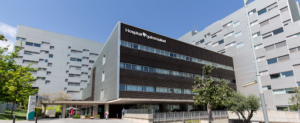Epilepsy
Disease description
Epilepsy is a chronic neurological disorder characterized by recurring seizures caused by abnormal activity in epileptogenic zones within the brain. Epilepsy can take different forms, ranging from brief seizures with or without loss of consciousness to severe prolonged convulsions requiring inpatient care.
According to the World Health Organization (WHO), epilepsy affects approximately 50 million people worldwide, making it one of the most common neurological disorders. Furthermore, epilepsy does not have a specific age of onset—it occurs equally frequently in adults, the elderly, and children.
Epileptic seizures are classified into focal (partial) seizures and generalized seizures.
Focal seizures originate from heightened epileptogenic activity in a specific region of the brain and may occur without a loss of consciousness. In such cases, individuals may experience unusual sensations, often described as an aura, and may have involuntary movements, such as twitching in the hand. Focal seizures with impaired consciousness involve a disruption of awareness, and individuals may have amnesia for events that occurred during the seizure.
Generalized seizures involve multiple epileptogenic zones across both hemispheres of the brain. They are categorized into tonic-clonic seizures (Grand Mal), absence seizures (Petit Mal), myoclonic seizures, atonic seizures, and tonic seizures.
- Tonic-clonic seizures are the most widely recognized type of seizure. They begin with a tonic phase (intense muscle stiffening) followed by a clonic phase (rhythmic muscle jerking). The person loses consciousness and usually falls immediately.
- Absence seizures are brief, usually lasting a few seconds, and may appear as “staring spells” or temporary loss of consciousness without convulsions. During an absence seizure, the person is unresponsive and does not react to any external irritations.
- Myoclonic seizures involve sudden, rapid muscle jerks or contractions that can affect one or multiple parts of the body.
- Atonic seizures are characterized by a sudden (lasting about 2 seconds) loss of muscle tone, resulting in weakness in the limbs, torso, or head and neck muscles. In contrast, tonic seizures involve intense muscle stiffening without subsequent jerking. Due to the sudden and disproportionate muscle tension, individuals may lose balance and fall.
Symptoms indicating the need for diagnosis and treatment
The symptoms of epilepsy depend on the type of seizure. Some reflect the “classic picture” of epilepsy, while others are nonspecific and require preliminary diagnosis and clinical examination by a specialist.
For focal seizures:
- Changes in perception (smells, tastes)
- Involuntary twitching or purposeless movements of a specific body part
- Mental changes (periodic disorientation, anxiety, amnesia)
For generalized seizures:
- Sudden muscle stiffening (tonic phase), followed by rhythmic jerking (clonic phase)
- Brief episodes of loss of consciousness lasting a few seconds
Other symptoms:
- Postictal confusion (disorientation after a seizure)
- Fatigue and headache after a seizure
- Involuntary urination during or after a seizure
Diagnostic and treatment methods in international clinics
Diagnostic
Modern diagnostic methods for epilepsy include several approaches that enable foreign physicians to accurately determine the presence of the condition, its type, and potential causes.
- Clinical examination and medical history collection: assessing symptoms, frequency, and the nature of seizures.
- Electroencephalography (EEG): in some cases, 24-hour EEG monitoring or video-EEG is used to record seizures and their connection to brain activity changes.
- Magnetic resonance imaging (MRI) used to detect structural brain abnormalities and computed tomography (CT) is employed in emergency cases to exclude trauma or other acute conditions.
- Laboratory tests: conducted to exclude metabolic disorders, infections, or other conditions that may trigger seizures.
- Psychological testing: assessment of cognitive functions and mental health, particularly in cases of suspected psychogenic non-epileptic seizures (PNES).
- Genetic testing: used for diagnosing specific forms of epilepsy, particularly in children with atypical or “subtle ” seizure forms.
Treatment
Ten years ago, treatment relied exclusively on medication, which increased the risk of drug-resistant forms of epilepsy. Today, epilepsy treatment in international clinics includes various approaches tailored to the patient’s individual needs, type of epilepsy, and its severity. Most patients travel abroad specifically for surgical treatment.
- Radical resection of the epileptogenic focus
This is a surgical procedure to remove the brain area where the epileptogenic focus has formed. Stimulating this area causes seizures. Resection is effective for patients with localized epilepsy or when medications fail to deliver results. - Vagus nerve stimulation (VNS)
This procedure involves implanting a device that sends electrical impulses to the vagus nerve, placed under the skin near the left collarbone or under the armpit. Vagus nerve stimulation reduces the frequency and severity of seizures. - Deep brain stimulation (DBS)
Electrodes are implanted into specific areas of the brain to regulate its activity, suppressing epileptogenic impulses and reducing seizure frequency. - Subpial transection
This involves a series of surgical interventions aimed at creating small cuts around the epileptogenic focus. This isolates the brain region with abnormal impulse activity. Subpial transection is typically a last resort when radical resection is not feasible due to the location of the focus in critical brain areas (e.g., speech centers).
Also, a diet high in fats and low in carbohydrates (ketogenic diet) may help control seizures in some patients, particularly children with drug-resistant epilepsy.
Clinical trials are currently underway for new methods such as gene therapy and immunotherapy. These approaches aim to actively engage the body in combating the condition and may become the primary focus for future epilepsy treatments.
Important to note, the choice of treatment method depends on numerous factors, including the type of epilepsy, the patient’s individual characteristics, and medical history. Therefore, treatment must be personalized and conducted under the guidance of qualified international specialists.
Innovations in global clinics
Neuroinfections—caused by viruses, bacteria, or other pathogens infiltrating the central nervous system—create conditions for the development of epileptogenic zones, leading to epilepsy. This correlation, discovered by U.S. scientists, may represent a new direction in diagnosing epilepsy associated with neuroinfections.
Laser ablation for epilepsy is less invasive than traditional surgeries and offers increased safety. The hospitalization period is about two days.
Affected areas are “burned” with a laser, and the method’s precision allows it to target even deep or hard-to-reach brain areas, including regions near highly sensitive zones.





